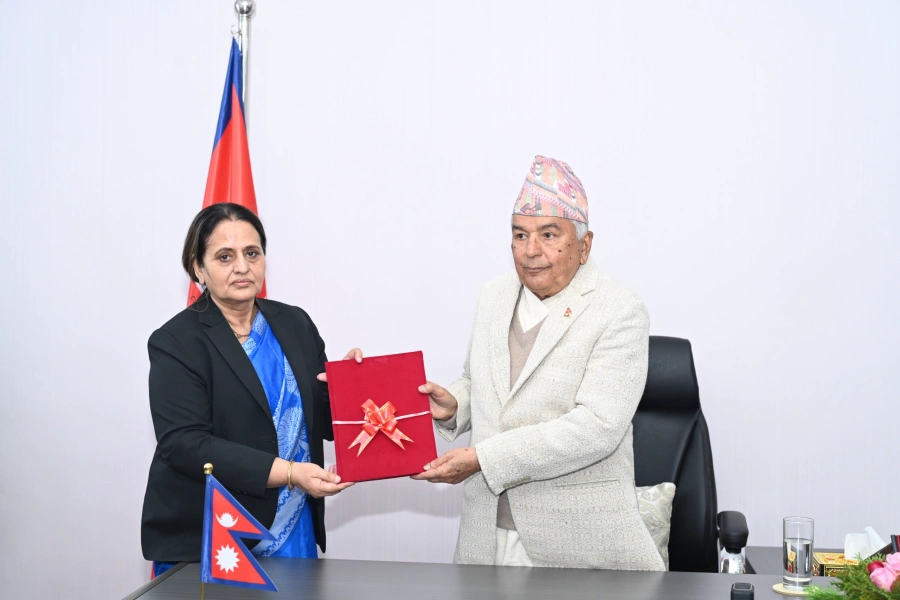We live in an age of great power competition, and extreme volatility. The unprecedented rise of China began geopolitical realignments in different parts of the globe. The process was further accelerated by the outbreak of Covid- 19 pandemic, war in Ukraine and other multiple crises raising several questions on the US-led existing liberal international order, a new global order in the post-Cold War that is struggling to be born in place of the old order, and the multipolar world. They all are bedeviling the nations from within and outside. Taken together, these dynamics have initiated reorganizing the geopolitical map of the world. Irrespective of multiple turbulent changes, what remains constant in foreign policy dictum is, “countries have neither permanent friends, nor enemies, only interests.”
Earlier this month, China brokered a peace deal between two regional arch rivals Iran and Saudi Arabia in the Persian Gulf region making them resume diplomatic ties after they broke in 2016. The peace deal can be seen as a good work in this age of intense rivalry and fierce competition to de-escalate tensions between nations and promote an environment for peace and growth. Beijing, that was until a few years ago, was hiding its capacity and bidding time, surprised the world as Jonathan Cheng writes in the Wall Street Journal, “by brokering a détente between Saudi Arabia and Iran, a bold foray into the Middle East’s turbulent rivalries.” The peace deal shows a clear intention of China to present itself as a global power, and increase its influence and widen its geostrategic space.
Background:
The Chinese Foreign Ministry posted a report on “US Hegemony and its Perils,” on February 20. The very first sentence says, “since becoming the world’s most powerful country after the two World Wars and the Cold War, the US has acted more boldly to interfere in the internal affairs of other countries, pursue, maintain and abuse hegemony, advance subversion and infiltration and willfully wage wars, bringing harm to the international community…”
The paper concludes with a call “to respect each other and treat each other as equals. Big countries should behave in a manner befitting their status and take the lead in pursuing a new model of state-to-state relations featuring dialogue and partnership, not confrontation or alliance. China opposes all forms of hegemonism and power politics, and rejects interference in other countries’ internal affairs. The United States must conduct serious soul-searching. It must critically examine what it has done, let go of its arrogance and prejudice, and quit its hegemonic, domineering and bullying practices.”
This official report, while portraying the United States as a domineering warmonger with “the perils of the US practices to world peace and stability and the well-being of all peoples,” calls China a nation of peace that has better solutions for the world’s challenges.
On the anniversary of Russia’s invasion of Ukraine, Beijing announced a peace plan for ending the Ukraine crisis. Though seen as a headline grabbing advertisement for Beijing’s ideas for a reformed global order in the West, Beijing’s peace plan for Ukraine entitled “China’s position on the Political Settlement of the Ukraine Crisis,” on February 24, 2023, contains twelve points: “respecting the sovereignty of all countries, abandoning the Cold War mentality, ceasing hostilities, resuming peace talks, resolving the humanitarian crisis, protecting civilians and prisoners of wars (POWS), keeping nuclear power plants safe, reducing strategic risks, facilitating grain exports, stopping unilateral sanctions, keeping industrial and supply chains stable, and promoting post-conflict reconstruction.”
These principles were outlined in an earlier speech Chinese President Xi Jinping made at the opening ceremony of the Boao Forum for Asia Annual Conference on April 21, 2022, proposing a new “Global Security Initiative” that is to “uphold the principle of indivisible security, build a balanced, effective and sustainable security architecture.” This required nations to, “stay committed to the vision of common, comprehensive, cooperative and sustainable security, and work together to maintain world peace and security; stay committed to respecting the sovereignty and territorial integrity of all countries, uphold non-interference in internal affairs,” among others.
Stressing that Asia be made, “an anchor for world peace, a powerhouse for global growth and a new pacesetter for international cooperation,” President Xi invoked the Five Principles of Peaceful Coexistence and the Bandung Spirit to, “resolutely safeguard peace in Asia.” The Five Principles of Peaceful Coexistence known as Panchsheel Includes mutual respect, equality, mutual benefit, mutual nonaggression and peaceful coexistence. These principles are consistent with the teachings of Lord Buddha, the enlightened son of Nepal, and constitute the foundational principles of the non-aligned movement (NAM) formally launched in September 1961 by a group of newly freed countries declaring not to take any sides in any confrontation between two rival blocs – free world led by the United States of America and North Atlantic Treaty Organization (NATO) and the so-called socialist world led by the then Union of the Soviet Socialist Republic (USSR) and the Warsaw Pact. Emerging sovereign nations decided not to take any sides with either of the poles and judge every issue on its merits and take independent decisions in the national interest.
A close look at these initiatives and principles enshrined therein seek to “encourage just international efforts to bring more stability and certainty to a volatile and changing era,” and stresses the paramount importance of state sovereignty and calls for non-interference in countries’ domestic affairs and an end to “bloc confrontation.” They also reveal the remarkable consistency in Chinese foreign policy, sophisticated thought process and long-term thinking before making moves.
China as a peacemaker in Iran-Saudi Arabia peace agreement
Unsettling times

The peace agreement was signed in Beijing on March 10. An official communique from the three parties - China, Iran and Saudi Arabia, stresses on an “affirmation of the respect for the sovereignty of states and the non-interference in internal affairs of states.”
It is not a mere coincidence that Beijing chose to unveil the peace agreement between Iran and Saudi-Arabia on the day President Xi formally secured the leadership of the Communist Party of China (CPC) for an unprecedented third term. The agreement was in the making for several months. President Xi Jinping visited the Saudi Kingdom in December last year where he met the king and the powerful crown prince Mohammed bin Salman (MBS). Iranian President Ebrahim Raisi visited Beijing in February, and had talks with the Chinese leadership over a range of issues.
Iran and Saudi Arabia have been critical of each other and are bitter rivals in outcompeting each other in their region. In 2016, Saudi Arabia formally cut off ties with Iran after demonstrators in Tehran attacked the Saudi Embassy following Saudi-Arabia’s execution of a prominent Shiite cleric. Saudi Arabia and Iran practice different Islamic faiths. While Wahhabism has been the dominant faith of Saudi Arabia, Iran has 90-95% of the Shia population, with only 5-10% as Sunni sect. Islamic Shia is Iran’s official state religion.
In recent years, Iran and Saudi Arabia have been supporting opposite sides in ongoing conflicts in Yemen, Iraq, Syria and Lebanon. This “shared neighborhood” has suffered from Saudi-Iran proxy conflicts that have gone to create long standing tensions. Now with the peace deal, both the countries pin their hopes to reduce tensions and regional security concerns. These bitter foes and rivals will now have an excuse to stop pouring resources into foreign proxy wars. How far it will go to eliminate the risks of direct conflict between the two countries will have to be watched very closely and cautiously in the coming days.
Yemen war has cost hundreds and thousands of lives, displaced millions and created “the world’s worst humanitarian disaster.” Iran backed Houthis were striking more populous areas deeper into the Kingdom’s border from Yemen’s territory. Riyadh is pushing the Yemeni government to negotiate with Houthis to avoid its exposures to direct Iranian attacks.
Iran calls for destruction of the State of Israel. Unlike Iran, Saudi Arabia has not called for erasing Israel from the map. Riyadh also has not sought to acquire nuclear weapons to annihilate its neighbors. Saudi Arabia is a part of the Trump administration-brokered Abraham Accords that initiated close intelligence and military coordination between Israel, Saudi Arabia and the United Arab Emirates. Tehran hopes that the peace deal should lead Riyadh-backed satellite Iran International to stop highlighting a nationwide social movement for women rights, and deter Riyadh from furthering relations with its primary regional rival Israel.
On March 20, 2003, the USA went to Iraq to change the regime of Saddam Hussein. After the fall of Saddam Hussein, the US President declared, “Mission Accomplished,” too soon and crises in fact emerged in the post-war Iraq. The US going to war in Iraq, to quote Judah Grunstein, is almost universally considered to have been “a strategic blunder of historic proportions.” Iraq war was seen to have led to the rise and spread of Islamic State of Iraq and Sria (ISIS) as a regional and global threat. Iran has been cited as the most beneficiary of the US’ Iraq moves in 2003.
Syria is in conflict with itself. The Syrian conflict has caused more than 500,000 deaths, displaced about 13 million Syrians and made over 5.6 million refugees. Outsiders have exploited its conflict for their own benefits. Iran has a growing military presence in Syria. Syria and Iran share their animosity against Israel and the United States.
Taking all these interlocking dynamics and deep-rooted distrust and rivalries between Iran and Saudi Arabia together, how far the peace agreement could significantly reduce the chance of new regional wars erupting in upcoming years will have to be seen.
Journalist Jonah Shepp has called the peace deal, “a transactional agreement, not a wholesale reset.” The US National Security Council spokesman John Kirby explained, “We support any effort to de-escalate tensions in the region. We think that’s in our interest.” The signing of the agreement has been described as a sign of China’s rising clout in the Middle East, and the eroding influence and power of the United States. China is making inroads through the peace deal into the Middle East that has been US’s traditional sphere of influence. It has posed a big question about “the changing of the guard from the US to China.” Political scientists talked of diminishing stock of America’s moral credibility for years and high-stakes framing of democracies vs autocracies narrative that is losing relevance in the changing context.
China has maintained functional ties with both Iran and Saudi which is considered a unique strategic advantage over the US. China has no concern with Saudi Arabia and Iran’s governance style and human rights record. Beijing quietly brokered a peace deal between Iran and Saudi Arabia when the world seemed solely focused on the Ukraine situation. It is a crowning feat in Chinese diplomacy, as political analysts call, “thumb its nose at the US by brokering a diplomatic deal in the region long seen by Washington as in its sphere of influence.” As the US shifts its focus towards threats in the Indo-Pacific and ongoing Russia-Ukraine war, question arises whether it reflects “the deprioritization of the region” by the USA.
China seems to have come a long way in handling global issues. The Iran-Saudi deal shows how much Chinese power and influence have grown in the region that the US traditionally dominated. China’s bringing these rivals together and making them agree to resume diplomatic relations after six years of their strained relations, as Michael Schuman writes, “could be the start of Chinese foreign policy in the region.” China is the largest trading partner with both Iran and Saudi Arabia. Beijing has tremendous economic and political influence and has the power to push towards settling disputes and reduce tensions. This clearly shows China has moved beyond its interests on economic dominance and access to markets to geostrategic interests. Iran and Saudi happen to be China’s natural friends. Both of them are pursuing membership in BRICS (Brazil, Russia, India, China and South Africa). These five emerging economies contain 3.21 billion people, (41.5% of global population) and 26.2% of the global GDP. China appears positive to have them in the BRICS fold.
America’s China expert, Michael Pillsbury in his book, “The Hundred Year Marathon: China’s secret strategy to replace America as the global superpower,” concludes“America my fail to recognize the problem and may refuse to face the long-term scenario of China not only surpassing us but also growing to double and then triple the size of our economy, by 2049. Then China will have won, by default.” China brokered Iran-Saudi peace deal and proposed peace plan to end the Russia-Ukraine war is taken as a clear message, as Jonathan Cheng, says China and its allies, “are no longer obliged to conform to a US led global order, that Beijing poses a challenge to Washington as it tries to shape a world it sees as divided between democracies and autocracies.” Reports are indicating that Saudi Arabia and Syria are nearing an agreement to restore diplomatic ties after negotiations mediated by Russia. This stands yet another sign of a dramatic shift in Middle East geopolitics pushing the United States on the sidelines.
Ukraine peace plan
China’s 12-point peace plan on the Ukraine crisis seems to be in the making alongside the Iran-Saudi peace plan. Ever since the Russian troops crossed the international border and invaded an independent and sovereign country, smaller and weaker neighbor, Ukraine, it has caused immense sufferings to the people and caused enormous destruction. War in Ukraine has attracted the world's attention, impacted the world throughout, and caused sharp increases in fuel, food, fertilizer prices and climate crises among others. War has been protracted, expansive and equally damaging to Russia’s reputation also.
War in Ukraine has also brought the larger geopolitical context and cold war pattern emerging not just between Ukraine and Russia, but also the larger community getting engulfed in the new Cold War. Some countries saw new opportunities to diversify their economic and military engagements with Russia. Such engagements are seen creating significant links in the emerging anti-Western bloc of middle-income countries.
China’s senior most diplomat, State Counselor Wang Yi said, “China has no intention to and will not seek to fill a so-called vacuum or put-up exclusive blocs. The world has more than just the Ukraine question and there are still many issues affecting peace and people’s lives.” That is interpreted as America being all in one Russia and Ukraine right now, but China is not.
President Xi, during his recent three-day visit to Moscow, positioned Beijing as “potential mediator between Moscow and Kyiv.” Reports indicate that President Xi plans to speak with Ukrainian President Volodymyr Zelensky and share his efforts to play a more active role in mediating an end to the war in Ukraine. It could be the start of China becoming a serious mediator and reaching out its foreign policy to the crisis-ridden countries. Washington has dismissed “Beijing’s push for Ukraine truce”.
Majority of the countries in the United Nations opposed and condemned Russia’s aggression. Early on, Nepal took the correct position in opposing and condemning the invasion of Ukraine by Russia as flagrant violation of international law. Under no circumstances, it said, the breach of international law and flagrant violation of international borders can be condoned.
Increasing inclination towards non aligned position
In a rapidly changing context, nations are making foreign policy and business moves without taking any sides in this age of great power competition. Though Saudi Arabia and the United States have remained close security partners, Saudi Crown Prince Mohammed bin Salman (MBS) despite pleas from the US to increase oil production, has stunned it by refusing to keep oil production up. MBS cut production to levels even below those that were expected. Saudi official is reported to have said, “we cannot be allies at the expense of our interests.” Riyadh thinks war with Iran and confrontation with China is not in national interest.
Some interpreted this as Riyadh moving away from Washington for not being a reliable partner in crises. Some analysts saw Saudi Arabia showing “shrewd pragmatism” in rivalries between the USA and China and Russia, and testing whether it is possible to make independent foreign policy and business moves without taking any sides. When the oil market was under the pressure of a pandemic, Riyadh and Moscow saw coordination as the best way to navigate a global economy that needs oil. Oil remains a key tool in the foreign policy of Saudi Arabia. Saudi Arabia is a member of the G-20 group and through its huge oil resources wants to have a greater clout on the world stage.
In 2019, drones and missiles struck two key oil installations inside Saudi Arabia damaging facilities that processed the huge amount of crude output causing disruption in world oil supplies. These attacks were claimed by Iran backed Yemen’s Houthi rebels. Though Washington called it “an unprecedented attack on the world’s energy supply,” yet there was no military response from the US. MBS was dissatisfied with Washington, and thought Saudi Arabia could no longer count on security guarantees from the USA. He then decided to look to the East. Riyadh has shown that it wants close and independent ties with the US as well as with Russia and China.
China in recent years, has started investments in infrastructure projects in Saudi Arabia. Russia has signed a nuclear cooperation agreement with Saudi Arabia. At a time when existing order is challenged, Washington suspects Riyadh is aligning with Moscow as Saudi led OPEC and its Russia led allies agreed to an oil production cut in October against Washington’s wishes. Last July, US President Joe Biden visited Saudi Arabia, which sees Ukraine as an opportunity to assert its interests in the world- where the US is not the undisputed superpower. By playing major powers against each other, Saudi Arabia can eventually pressure Washingtons to concede its demands for better access to US weapons and nuclear technology. (WSJ, March 1, 2023).
The principles of non-alignment have come to the fore to constitute the core principles of foreign policies of several countries, though without an explicit mention of the non-aligned principles. Foundational principles of the non-aligned movement (NAM) revolving around thePanchsheel (five principles of peaceful co-existence) hold a great promise to maintain peaceful, stable and progressive relations among nations and promote peace, security, and stability in this volatile and turbulent world. It recognizes ground realities and pursues pragmatism in foreign policy. NAM stands as a pluralist concept of international society, and a quest for greater justice, inclusion and equality among and within nations, a clear departure from the pool of jealousy, rivalry and competition. The ethos of NAM is useful for fuller and more realistic understanding of one another’s point of view in the present context of fluidity of international relations. And unfolding developments across the globe conform to the relevance and reality of the nonaligned positions than ever before. During the Cold War (1945-1990), the majority of the countries stood in between, not allied with either of the poles. This gave them greater autonomy, choice and benefits than otherwise would have been the case. With the end of the post-Cold War, in a new order struggling to be born in an emerging geopolitical reality, it is safe to observe to adhere to the principles of nonalignment.
Nepal, South Asia
It has been the long-standing position of Nepal to have friendship with all and enmity with none. China, a power that is making waves in emerging geopolitical order, is a close, and friendly neighbor of Nepal enjoying age-old relations and close understanding. Nepal borders the sensitive and restive Tibet autonomous region of China, and its development, stability and security are seen closely linked to China’s. As Nepal sits strategically between India and Tibet Autonomous Region of the People’s Republic of China, there is an increasing attention on Nepal. Greg C. Bruno, in his book, Blessings from Beijing: Inside China’s Soft-Power War on Tibet, examines among others “how deep China’s claws had sunk into Nepal.” Tibet related issues are in the high attention of Chinese diplomats, and their “anti-Tibetan espionage program,” is said to be "one of the most aggressive efforts.” Beijing seems determined that “smashing will occur inside and outside of the nation” (p.3). The presence of Tibetan refugees in Nepal invites China’s high attention. China entering even into the turbulent politics of the Middle East, gives a clear message there is no question of China tolerating anything going wrong against its interests in its immediate periphery.
Nepal has cordial relations both with Iran and Saudi Arabia. Saudi Arabia is one of the major destinations for Nepali migrant workers. Saudi’s development cooperation is focused on the upliftment of rural communities, agricultural development and energy production. Nepal’s first and foremost interest is the protection of the interests of Nepali workers in Saudi Arabia. With both Iran and Saudi Arabia at peace in the Gulf region, where it has a large number of Nepalis working, Nepal hopes that it would contribute to creating a conducive international environment for their decent and dignified labor.
Given the bitterness and congenital enmity between India and Pakistan, South Asian region remains least integrated and one of the most deprived regions of the world. Largest regional cooperation organization South Asian Association for Regional Cooperation (SAARC) has been put in a ventilator. SAARC is a geographical reality. No nation has any option to choose its neighbors. Unless neighbors come together, work together to rise to the occasion, the region cannot be projected as peaceful, stable and progressive. Outside forces look for holes to blow up differences and carve a space for themselves. Since the 1950s, there have been attempts by external powers to mediate interstate disputes and differences in South Asia, be it the United States or Soviet Union. Soviet invasion of Afghanistan in 1979, aggravated the intense rivalries, enmity and protracted terrorism into the region. South Asia has become the worst victim of terrorism created by external forces. Today, cross-border terrorism continues to bedevil the region. As writer and philosopher George Santayana said, “Those who cannot remember the past are condemned to repeat it.” Letting personal whims and desires drive foreign policy for momentary gains in such a challenging time is both the refusal to look at reality and putting the future generation at risk.





































